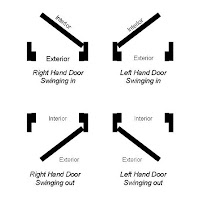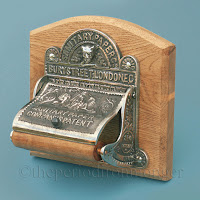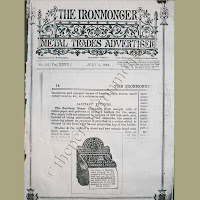Please click on the images to expand them
In this blog The Period Ironmonger is going to try and explain the complexities of determining how a door is handed. We have been asked why some of our Thumb and Cottage Latches are described as ‘handed’ – left or right hand, hopefully this will explain why and how they work.
 Firstly I’ll explain the different ways a door can be handed. Looking on various web-sites you will probably find there are a few conflicting opinions of how to establish whether a door is handed left or right based mainly on whether you stand inside or outside the room but here are the basic principles – if you stand outside your front door and fold your arms out in front of you (your elbows are the hinges) move one hand and arm in whichever direction the door opens. If your right hand is moving away from you then your door is Right Handed. If your left hand is moving away then it is Left Handed. If your right hand is moving towards you, your door is Right Hand Reversed and if your left hand is coming toward you it is Left Hand Reversed.
Firstly I’ll explain the different ways a door can be handed. Looking on various web-sites you will probably find there are a few conflicting opinions of how to establish whether a door is handed left or right based mainly on whether you stand inside or outside the room but here are the basic principles – if you stand outside your front door and fold your arms out in front of you (your elbows are the hinges) move one hand and arm in whichever direction the door opens. If your right hand is moving away from you then your door is Right Handed. If your left hand is moving away then it is Left Handed. If your right hand is moving towards you, your door is Right Hand Reversed and if your left hand is coming toward you it is Left Hand Reversed. 
The Thumb Latch above is designed to fit a left hand door - Left Hand Door swinging in. As you stand looking at the door the handle would be on the right hand side of the door with the hinges on the left hand side. The arm of the latch would be on the interior side directly behind the handle.
The Thumb Latch opposite fits on a right handed door - Right Hand Door swinging in. Facing the door as it swings away from you the handle will be on the left hand side and the door hinges on the right hand side, the arm of the latch will be on the interior directly behind the handle.
Please note that the information we impart is for the Thumb Latches shown, if you are buying a new door or having a door fitted please consult your supplier for their interpretation of how they 'hand' doors. As I said earlier different web-sites give differing views.



